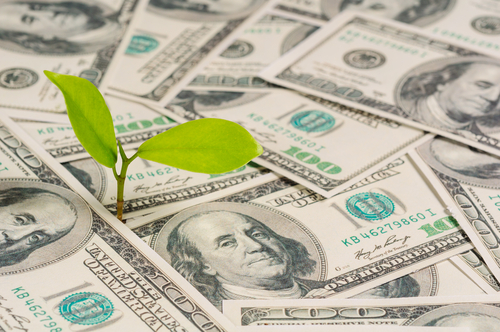 If you’ve ever read articles on Sustainablog before (or other sites like this one), Google probably knows that you’re interested in sustainability, and therefore, you’ve probably seen ads in your sidebar for green masters’ programs. The rise of so-called “green MBA” programs is a welcome addition to the business landscape. The “jobs vs. the environment” debate is over (both won, since they seemed to have negotiated a merger), and it’s pretty clear that business, in general, is on board with sustainability.
If you’ve ever read articles on Sustainablog before (or other sites like this one), Google probably knows that you’re interested in sustainability, and therefore, you’ve probably seen ads in your sidebar for green masters’ programs. The rise of so-called “green MBA” programs is a welcome addition to the business landscape. The “jobs vs. the environment” debate is over (both won, since they seemed to have negotiated a merger), and it’s pretty clear that business, in general, is on board with sustainability.
As a professor in an MBA program, I can tell you that the demographic makeup of my classes differ greatly from those of the courses I took when doing my schooling (a Master’s in Conservation Biology). We have high heels, lots of makeup, and high-end fashion. How was it that the folks interested in green have changed so substantially over such a short period of time? I’d argue it’s the result of many factors, but two in particular stand out.
First, is Life Cycle Analysis. We’ve covered LCA here on Sustainablog before, looking at the life cycle analysis of Amazon’s kindle versus paper books. The LCA provides something that the environmental movement largely failed to deliver: apples-to-apples data that help managers make very straightforward decisions incorporating the entire life cycle of products they design. It’s not that the environmental movement wasn’t closely aligned with science–it always has been strongly founded in science. The difference is that the LCA, when done right (per the ISO 14000 series standards), has standardized the science of sustainability, giving clear and relevant data that helps businesspeople create products that are more sustainable, healthier, AND that cut costs, reduce risks, and create new markets.
The second is Return on Investment, or ROI. The concept is pretty straightforward. If a project costs X up front, saves you Y over its useful life, then your return on investment is positive if Y is greater than X. (To actually calculate a ROI for a sustainability project, take the savings over the life of the project, subtract the cost, then divide that result by the cost. This will give you what you’re probably used to seeing, a % ROI).
But the bottom line is that ROI for sustainability has been getting better and better:
- Solar ROI is perhaps the best in the green business world, according to this Clean Tech source
- Passive heat recovery ROI is also consistently positive, according to this Green Building source
- Window film provides a positive energy benefit and ROI
The list goes on…but the bottom line is that, as the cost of unsustainable products like plastic, oil, gas, and coal continue to rise, projects with positive environmental effects are now having better and better ROIs. (and that doesn’t even include the externalized costs of dirtier products, like coal, which would cost 3x what wind power costs if it had to pay for all the public health problems it causes).
For those hoping to reduce the amount of money they’re losing every month to utility bills, the ROI for house and home projects is exceptionally good. Check out the Department of Energy’s Energy Saver’s Guide for some great tips, but you may also want to check out this really cool, interactive website that showcases ROI for a variety of sustainability projects in your home. Hover over any of the project ideas and you’ll see how much projects typically cost up front, what the average savings are, and what the ROI is. Here’s a screenshot.
The bottom line has become the triple bottom line, and the result is more sustainable behavior by individuals and companies. We at Sustainablog look forward to helping you uncover many more great ways to stop losing hard-earned money every month on your utilities, and whether you care about polar bears and the effects of global warming or not, you’ll still be doing something good. Win, win, win, right?
About the author: Scott Cooney is a professor of sustainability in the MBA program at the University of Hawaii at Manoa, and the founder of Pono Home, a green home consulting service headquartered in Honolulu, Hawaii.
Infographic produced by Safestyle UK, who also sponsored the publication of this post.

